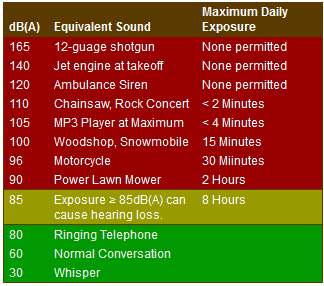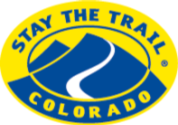Vehicle Noise
“Louder doesn’t mean faster.”
The Threat
Excessive sound from Off-Highway Veichles has become one of the biggest threats to OHV use. Fortunately, loud OHVs can be fixed without losing any speed or power.
What We’re Doing
Noise limits have been put in place by OHV organizations in an effort to stop the flow of noise complaints that could lead to even stricter limits being enforced by the government. Some government-imposed limits can be so strict that they can effectively end motorized recreation in designated areas. It’s already happened in parts of California.
It’s up to you to keep your vehicle below these standards. Limits of 96 decibels are attainable, especially with stock equipment. Look for aftermarket exhaust systems that are rated for 96dB or below. Remember that louder doesn’t mean faster.
How Loud is TOO Loud?

What’s Happening in Colorado
In the spring of 2008, the state of Colorado enacted a law requiring all OHVs operated on public lands in Colorado to meet a sound limit of 96dB(A) measured using the SAE J 1287 20″ stationary sound test. The law took effect on July 1, 2010.
During the summer months, Stay The Trail hosts events around the state where you can get your ride tested for compliance with this law. Check out our event calendar to find an event near you. Most vehicles will easily meet this standard. When shopping for aftermarket exhausts, be sure to look for models that will comply with the sound limit.
What You Can Do
- Use the appropriate exhaust system for trail riding. Race systems are smaller and have less packing material inside to absorb the sound.
- Make sure your muffler/silencer is repacked regularly and properly. Packing does go bad over time and makes your machine louder.
- Not all the sound comes out of the exhaust, if you’ve vented your airbox or removed the lid, close it back up.
- Loose bolts can also rattle and add to the noise, keep them tightened.
- Also be aware that keeping your machines’s sound levels as low as possible will keep your own hearing damage to a minimum. Prolonged exposure to noise levels above even 85 dB can cause gradual hearing loss.
- Spark arrestors are required on all OHVs operating on public lands nationwide.
Keep Your Wheels Where They Belong!®
And finally, remember:
- Drive on designated motorized routes where such designations have been made.
- Where no designations have been made, drive only on existing routes until designations are made.
- On public lands managed by the Forest Service maps to determine which trails and roads are open to your vehicle.
- On public lands managed by the Bureau of Land Management (BLM), follow on-the-ground signs to determine which trails and roads are open to your vehicle. when maps are not available.
